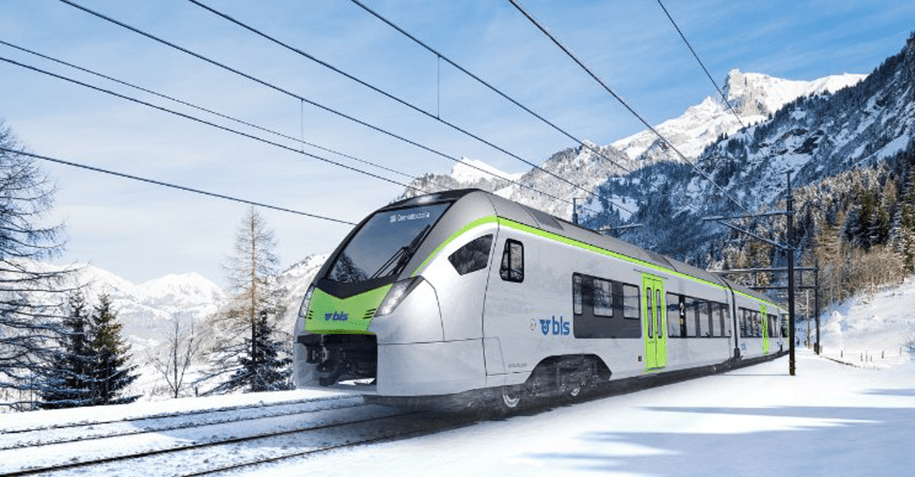High Speed Two (HS2) Ltd.
High Speed Two (HS2) Ltd is the company responsible for developing, delivering and promoting the High Speed Two (HS2)

By Pascal Cantin
BLS is to purchase 52 latest-generation Flirt trains. The Flirt will replace three older train models, enabling BLS to push ahead with the planned expansion of regional transport in the Berne area.
Peter Spuhler, President of the Board of Directors of Stadler, and the CEO of BLS Bernard Guillelmon signed a supply contract today for the acquisition of 52 units of the latest-generation Flirt train. The Confederation, the cantons and the Board of Directors of BLS have approved the necessary resources for the purchase. Peter Spuhler is proud to be producing the latest-generation Flirt trains for BLS to follow on from the previous MUTZ double-decker multiple units. “We are particularly pleased to be able to deliver Swiss trains from Thurgau to BLS for this contract.” Spuhler describes the new train as particularly lightweight and energy saving, with extra comfort and security for passengers. “We were convinced by Stadler’s offer for the largest train acquisition in the history of BLS. We are pleased to be developing the new trains with Stadler and look forward to offering our passengers an even more comfortable and reliable means of transport to their destinations in the future”, commented BLS CEO Bernard Guillelmon on signing the contract.
BLS has taken out options for a standardized fleet
BLS will use the 52 new trains to replace three older models and harmonize its fleet. Operations, planning and maintenance will be greatly simplified as a result. In addition, BLS can now proceed with the planned expansion of regional transport in the canton of Bern. Measures envisaged by the canton include running trains at 15-minute intervals in the main perimeter of the Bern commuter rail network. 28 trains will be put into service on various commuter rail routes in Bern. BLS is initially only ordering 24 trains rather than 30 for regional express traffic because the Bern-Neuchâtel-La Chaux-de-Fonds line will no longer form part of its regional network in the future. Instead, it will operate as a long-distance route. To make sure that BLS is well equipped for future developments and to guarantee the uniformity of the fleet in the long term, BLS is taking out an option for a further order of trains of the same type.
Customers have their say in the design of the new trains
From mid-2018 Stadler will create a full-scale model – or maquette – in its Bussnang factory. BLS and Stadler will confirm the design of the new trains on the basis of this maquette. The model will help determine elements such as the fittings in the boarding areas, the type and upholstery of the seats, and the size of the tables. To take the needs of passengers into account as much as possible, BLS is involving various customer representatives in the process, such as Pro Bahn, selected passengers, and organisations for disabled travellers. Stadler is expected to start building the first railcar bodies in early 2019. The first trains should be ready to be tested on track by mid-2019. BLS will put the trains into operation gradually between 2021 and 2025.
The new trains are one-storey high and 105 meters long. The trains for commuter rail transport (28 units) and regional express transport (24 units) are technically identical. Both the commuter rail and regional ex-press trains have a low-floor design and spacious boarding areas with standing room, large windows, stor-age spaces, plug sockets in 1st and 2nd class, and good mobile phone reception. There will also be a cater-ing area on the regional express trains
High Speed Two (HS2) Ltd is the company responsible for developing, delivering and promoting the High Speed Two (HS2)
Sources: Business Insider | The Guardian | New York Times By Mark-Anthony Johnson The Netherlands has a highly ambitious
Spea Engineering in Podgorica, Montenegro for the Kick-off meeting of the project Development of a Road Database of Montenegro
ACCIONA has won a significant contract to build the new Cebu-Cordova bridge in the Philippines, marking the company’s second
The use of GFRP reinforcement is gradually spreading to replace or to integrate the traditional steel rebar for tunnels